Table of content
Char Siu Bao, a beloved staple of Chinese cuisine, captures hearts and palates worldwide with its soft, pillowy exterior and savory-sweet filling. Unlike its baked counterpart, the steamed version—Char Siu Bao—boasts a delicate, cloud-like texture that melts in your mouth, contrasting beautifully with the rich, caramelized flavors of the barbecue pork filling. Whether you’re a seasoned home cook or a curious novice, this comprehensive guide will walk you through the intricacies of crafting these iconic buns from scratch. From perfecting the dough to achieving the ideal balance of flavors in the filling, prepare to embark on a culinary journey that blends tradition with creativity.
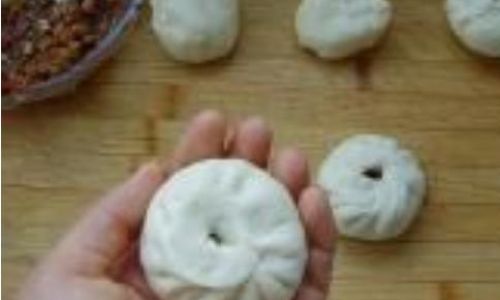
The Allure of Char Siu Bao
Char Siu Bao, often translated as “steamed BBQ pork buns,” is a dim sum classic that traces its roots to Guangdong province in southern China. Traditionally served in bamboo steamers during yum cha (tea) sessions, these buns symbolize comfort and indulgence. The magic lies in their duality: the fluffy, slightly sweet wrapper embraces a filling of tender, marinated pork shoulder or belly, glazed with a sticky-sweet sauce infused with hoisin, soy, and aromatics like garlic and ginger. While store-bought versions are convenient, homemade Char Siu Bao elevates the experience, allowing you to control the quality of ingredients and tailor the flavors to your liking.
Ingredients: Building Blocks of Perfection
Creating authentic Char Siu Bao requires attention to detail, starting with the ingredients. Here’s a breakdown of what you’ll need:
For the Dough
- 500g (4 cups) all-purpose flour: Use a high-quality brand for the best texture.
- 2½ tsp (10g) instant yeast: Ensures the dough rises properly.
- 1 tbsp (15g) granulated sugar: Feeds the yeast and adds subtle sweetness.
- 1 tsp (5g) baking powder: A leavening agent for extra fluffiness.
- 1 tsp (5g) salt: Enhances flavor.
- 2 tbsp (30ml) vegetable oil: Adds moisture and softness.
- 250ml (1 cup) warm water (40-45°C/105-115°F): Activates the yeast.
For the Filling
- 300g (10.5oz) char siu pork: Use store-bought or homemade (recipe below).
- 2 tbsp vegetable oil: For sautéing.
- 1 small onion, finely diced: Adds depth.
- 3 garlic cloves, minced: For aromatic punch.
- 1 tbsp fresh ginger, grated: Balances sweetness.
- 3 tbsp hoisin sauce: The signature sweet-savory base.
- 2 tbsp oyster sauce: Umami-rich thickness.
- 1 tbsp soy sauce: Saltiness and color.
- 1 tbsp Shaoxing wine: Or dry sherry for acidity.
- 1 tbsp sugar: Caramelizes the sauce.
- 1 tsp sesame oil: Nutty finish.
- ¼ cup water: To adjust consistency.
- 1 tbsp cornstarch + 2 tbsp water: For thickening.
For Homemade Char Siu (if needed)
- 500g (1lb) pork shoulder or belly: Fatty cuts yield juicier results.
- Marinade:
- 2 tbsp hoisin sauce
- 1 tbsp soy sauce
- 1 tbsp honey
- 1 tbsp Chinese five-spice powder
- 1 tbsp rice wine
- 1 tsp red food coloring (optional, for color).
Step 1: Crafting the Dough
The dough is the canvas for your Char Siu Bao. Achieving the right balance of softness and structure is key.
-
Activate the Yeast:
In a small bowl, combine warm water, sugar, and yeast. Let it sit for 5-10 minutes until frothy. This confirms the yeast is active. -
Mix Dry Ingredients:
In a large bowl, whisk flour, baking powder, and salt. Create a well in the center. -
Combine Wet and Dry:
Pour the yeast mixture and vegetable oil into the well. Stir with a wooden spoon until a shaggy dough forms.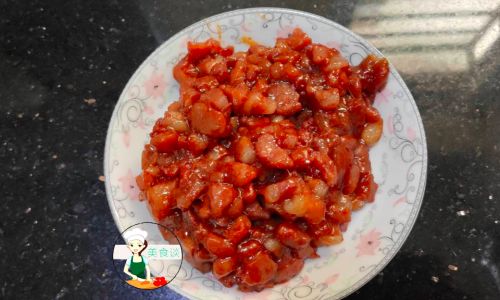
-
Knead:
Transfer to a floured surface and knead for 8-10 minutes. The dough should be smooth, elastic, and springy. If sticky, add flour 1 tbsp at a time. -
First Rise:
Place the dough in a greased bowl, cover with a damp cloth, and let it rise in a warm spot for 1-1.5 hours, or until doubled in size.
Step 2: Preparing the Filling
The filling’s success hinges on balancing sweet, savory, and umami elements.
-
Char Siu Basics:
If using store-bought char siu, skip to step 3. For homemade:- Marinate pork in the char siu marinade for at least 4 hours (overnight is best).
- Roast at 200°C (400°F) for 25-30 minutes, basting occasionally. Let cool, then dice.
-
Sauté Aromatics:
Heat oil in a pan over medium heat. Add onion, garlic, and ginger. Sauté until fragrant (2-3 minutes). -
Build the Sauce:
Stir in hoisin, oyster sauce, soy sauce, Shaoxing wine, and sugar. Cook for 2 minutes.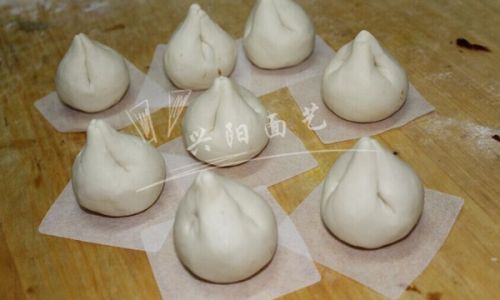
-
Thicken:
Mix cornstarch and water. Add to the pan with diced char siu. Cook until the sauce thickens (3-4 minutes). Let cool completely.
Step 3: Assembling the Buns
This step requires patience but is deeply satisfying.
-
Punch Down the Dough:
Gently deflate the risen dough and divide it into 12 equal pieces (about 60g each). -
Shape the Wrappers:
Roll each piece into a circle, keeping the edges thinner than the center. This prevents the bottom from becoming too thick. -
Fill and Seal:
Place 1.5-2 tbsp of filling in the center. Gather the edges, pinching and twisting to seal. Place the bun seam-side down on a parchment-lined tray. -
Second Rise:
Cover the buns with a damp cloth and let them rise for 20-30 minutes. They should puff up slightly.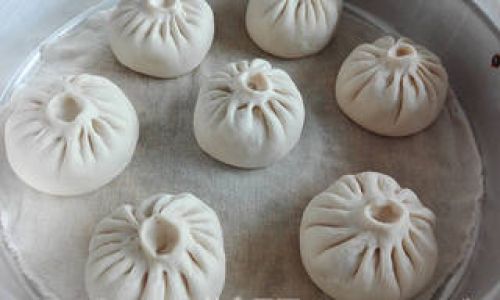
Step 4: Steaming to Perfection
Steaming is where the magic happens—locking in moisture and flavor.
-
Prepare the Steamer:
Use a bamboo steamer or a pot with a lid. Line the base with parchment or cabbage leaves to prevent sticking. -
Arrange the Buns:
Place buns 2 inches apart to allow expansion. Cover with the lid. -
Steam:
Bring water to a rolling boil, then reduce to medium. Steam for 12-15 minutes. Avoid opening the lid mid-steaming to prevent collapse. -
Rest and Serve:
Turn off the heat and let the buns sit for 5 minutes before uncovering. This prevents wrinkling. Serve warm with chili oil or black vinegar.
Pro Tips for Flawless Buns
- Dough Consistency: If the dough feels stiff after kneading, add water 1 tsp at a time. Overly sticky? Dust with flour.
- Filling Moisture: Ensure the filling isn’t too wet, as it can make the dough soggy.
- Steam Quality: Use boiling water for steaming to maintain a consistent temperature.
- Storage: Freeze uncooked buns for up to a month. Steam directly from frozen, adding 2-3 minutes to the cooking time.
Variations and Customizations
- Vegetarian Option: Replace pork with finely chopped mushrooms, tofu, or water chestnuts.
- Spicy Twist: Add Sichuan peppercorns or chili flakes to the filling.
- Gluten-Free: Substitute all-purpose flour with a 1:1 gluten-free blend (results may vary).
The Cultural Tapestry of Dim Sum
Char Siu Bao is more than a dish—it’s a symbol of communal dining. In Guangdong, families gather around steaming baskets, sharing stories over cups of tea. The act of steaming buns represents nurturing and togetherness, a tradition that transcends borders.
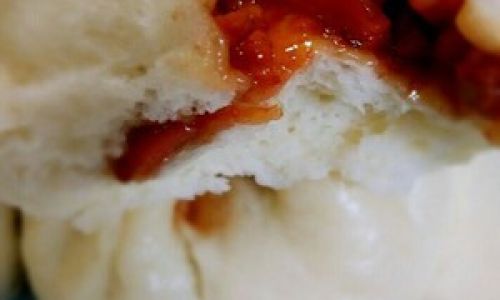
Troubleshooting Common Issues
- Collapsing Buns: Overproofing the dough or opening the steamer too soon.
- Dense Texture: Insufficient kneading or yeast activity.
- Dry Filling: Undercooking the sauce; ensure it’s thick but moist.
Conclusion: A Labor of Love
Crafting Char Siu Bao is an exercise in patience and precision, but the rewards are immense. Each bite offers a harmonious blend of textures and flavors, a testament to the artistry of Chinese cuisine. Whether enjoyed during a leisurely brunch or as a comforting snack, these buns bridge tradition and innovation. So, roll up your sleeves, embrace the process, and savor the satisfaction of creating a dim sum classic in your own kitchen. Your future self—and your lucky guests—will thank you.
Word Count: 1,420

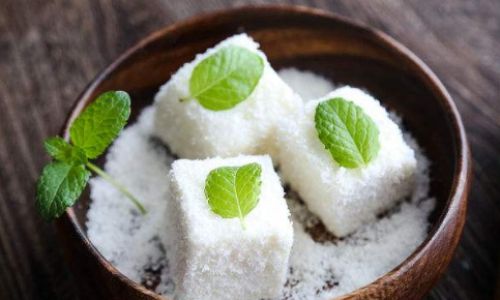
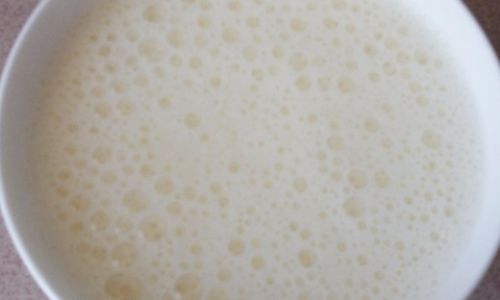
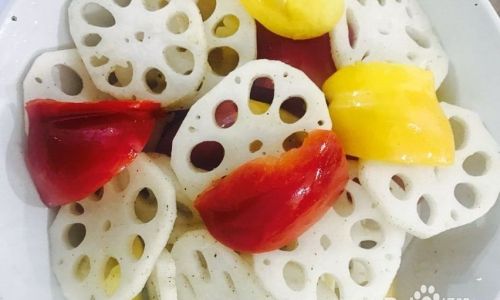
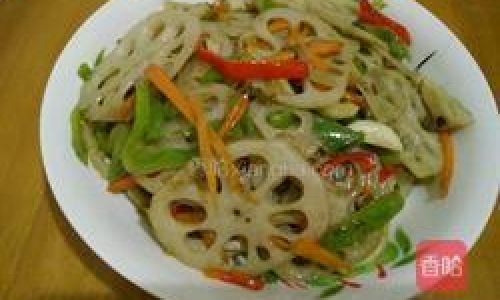
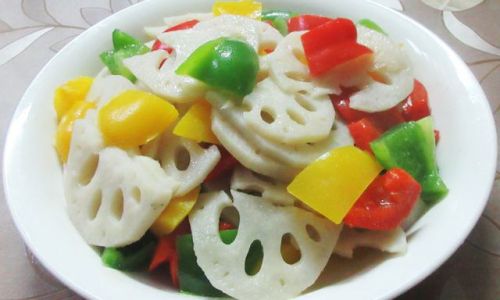
0 comments